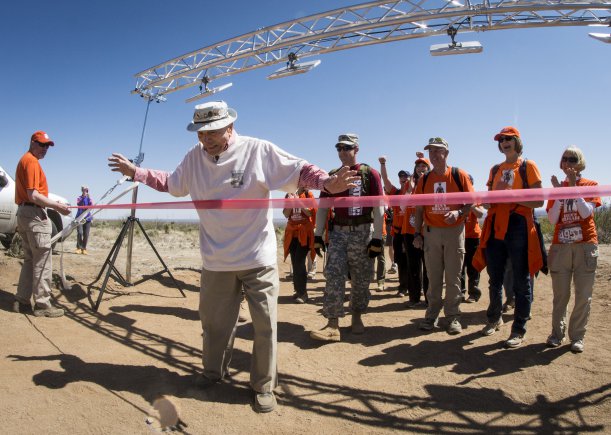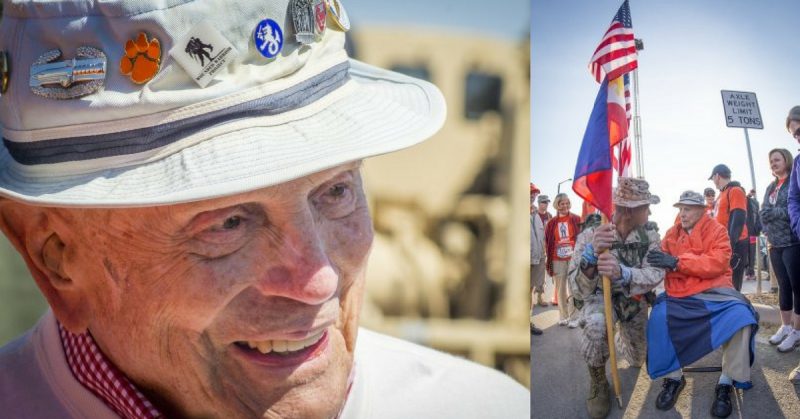War History Online proudly presents this Guest Piece from Staff Sgt. Ken Scar.
WHITE SANDS MISSILE RANGE, N.M. – The start of the 27th annual Bataan Memorial Death March was a raucous affair. Cannon fire sent 6,613 hard-charging and motivated athletes surging across the starting line and into the New Mexican desert under a vibrant orange and violet sunrise. They whooped and cheered as they embarked on one of the most legendarily grueling sporting events in America.
Their ranks included wounded warriors, active duty service members, veterans, professional athletes, and even a team of circus performers. A large crowd of onlookers tirelessly cheered on the seemingly endless stream of participants. The cannons fired again and again.
Thirty minutes later, as the footsteps of the 6,613th starter receded into the distance, a final participant who was unlike all the others slowly approached the line in the settling dust. Wearing comfortable loafers, slacks, and a button-up dress shirt under his bright orange windbreaker, he received the loudest cheer of all.
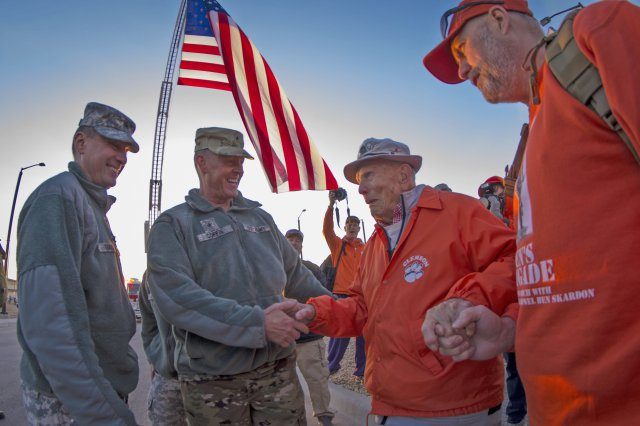
This was retired U.S. Army Col. Ben Skardon, 99, the only survivor of the real Bataan Death March who walks in the event.
Skardon has been a familiar figure at the march for nine years. He travels to White Sands Missile Range from his home in Clemson, South Carolina. He is an alumnus of Clemson University, which he attended as a cadet from 1935-1938 when it was still an all-male military school.
He walks – methodical and steady as a desert tortoise – across eight and a half miles of desolate desert terrain to honor his brothers-in-arms who did not return home. It is the continuation of a journey that began 74 years ago in the dank jungles of the Philippines.
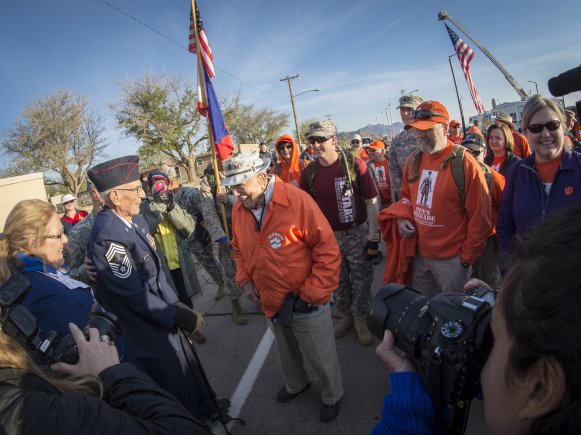
“This is now my pilgrimage,” he says. “Coming here is like going to Mecca – it’s a shrine. I learned how easy it is to die when you lose the will to live.”
The story of the Bataan Death March began April 9, 1942, when about 75,000 Filipino and U.S. soldiers were surrendered to Japanese forces. The 50-80 mile march was characterized by wide-ranging physical abuse and murder, and resulted in very high fatalities inflicted upon prisoners and civilians alike by the Japanese Army, and was later judged by an Allied military commission to be a Japanese war crime.
Mostly forgotten is the four months of fierce fighting that preceded that. The battles began immediately after the bombing of Pearl Harbor, and were fought in a region plagued by malaria, with Allied forces that were hampered by outdated equipment and nearly no air power. They survived on quarter rations and received no medical help.
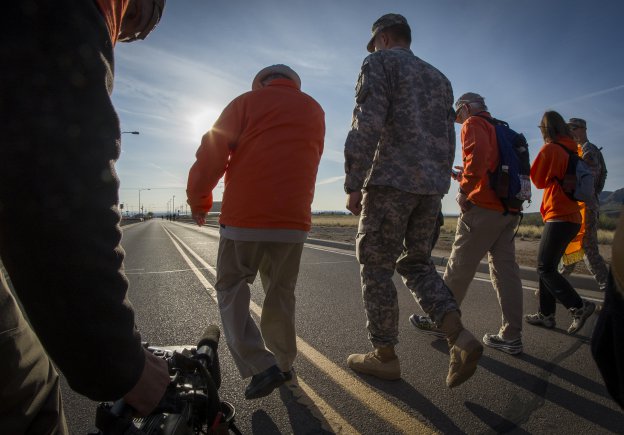
In that short timespan, Skardon, a newly-minted captain leading Company A of the 92nd Infantry Regiment PA (Philippine Army), a battalion of Filipino Army recruits on the Bataan Peninsula, earned two Silver Stars and four Bronze Stars for valor.
When the Allied forces finally had to surrender, things turned from bad to worse for Skardon and his comrades. Three-quarters of a century later, he still vividly recalls what it was like.
“The Japanese told us we were not prisoners of war — we were captives, and they’d treat us any way they wanted to,” he said. “So, we were treated like animals — worse than animals.”
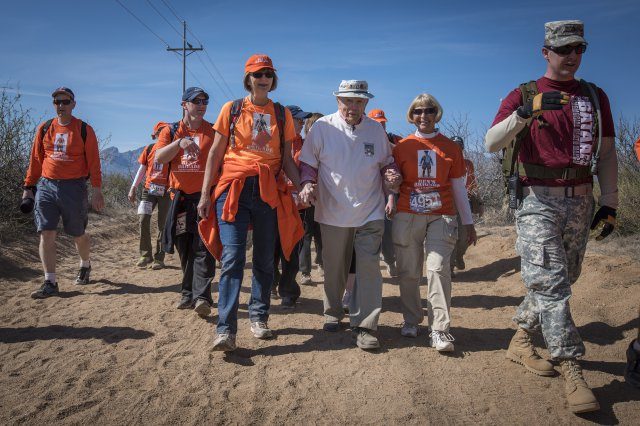
They were forced to march approximately 60 miles north to Camp O’Donnell, a prison camp, in the scorching heat through the Philippine jungles. Somewhere between 5,000 and 11,000 did not survive. Those that did were rewarded with years of horrors in Japanese prison camps until they were either rescued or died.
Skardon survived for more than three years in the camps, despite becoming deathly ill with malaria, beriberi, diarrhea and other ailments. Two fellow Clemson alumni, Henry Leitner and Otis Morgan, kept him alive by spoon-feeding him and eventually trading his gold Clemson ring — which he had managed to keep hidden — for food.
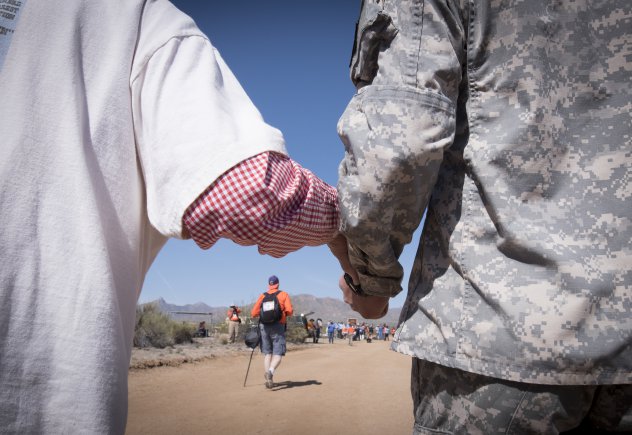
Incredibly, Skardon also survived the sinking of two unmarked Japanese transport ships carrying him and other POWs to mainland Japan – including the infamous sinking of the Oryoku Maru. Sadly, Morgan was killed during the bombing of that ship, and Leitner died in a Japanese POW camp in 1945.
Skardon eventually ended up in a prison camp in Manchuria, where Russian units freed him in August 1945. He was 24 years old and weighed 90 pounds.
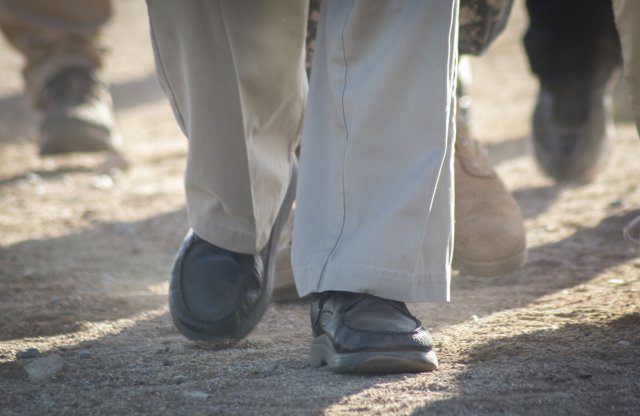
Remarkably, his service to our country did not end there. He served in Korea from 1951-52, and retired from the Army with the rank of colonel in 1962.
For the next chapter of his life, he joined his alma mater, Clemson University, as a professor in the Department of English and was named Alumni Master Teacher in 1977. He taught at Clemson until his retirement in 1985 – and even that was just another beginning for him.
Back on the hot and dusty plains of White Sands, Skardon is greeted by enthusiastic groups of admirers at every checkpoint. His pace is hard to believe for a man approaching a century of life – every 30 minutes he covers another mile.
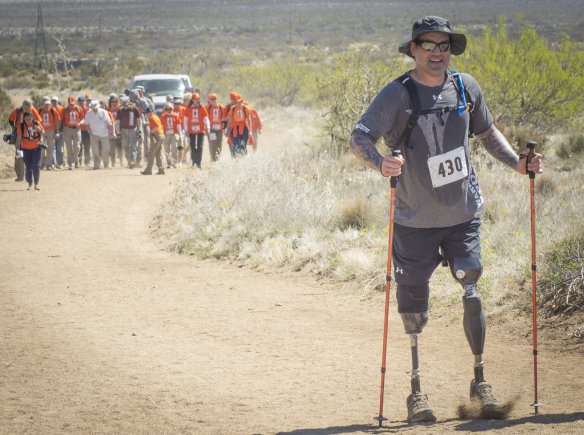
“I have so much respect, admiration and love for this man,” said Cheryl Fallstead, a New Mexico writer and editor, and proud member of Ben’s Brigade, the loyal group of supporters that walks with him every year that includes many of his former students and Clemson alumni.
Fallstead became a charter member of the group after tracking Skardon down for an article following his first march in 2007. “He has endured so much, but didn’t let the unimaginable things he survived ruin his life. And now here he is, at the age of 99, marching over eight miles! He inspires me and makes me want to be a better person.”
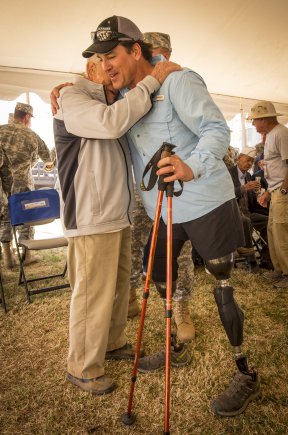
The 25 members of Ben’s Brigade take turns holding him steady, and keep his spirits high by cracking jokes and singing the Clemson fight song. After about two miles the route veers off of pavement and onto a dirt road that cuts straight through the sand and creosote-covered plains for several miles. It’s on this stretch that the group settles down a bit, and Skardon gets quiet.
“I get focused. I even think of things I haven’t thought about in years – [but] it’s not a time for meditation. I don’t try to think of all the ramifications,” he explains. “My debt to Henry Leitner and Otis Morgan is heavy. It cannot be repaid. People ask me, ‘How can you account for being alive when your best friends are dead?’ I say, ‘I can’t.'”
Skardon covered the 8.5 miles with his best time ever this year: 4 hours, 2 minutes.
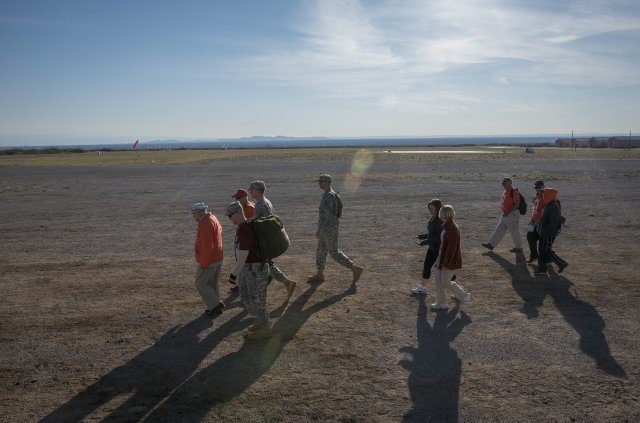
“Clearly, he is not getting older, only better,” said David Stalnaker, a former student of Skardon’s who has walked with him in the march every year but one. “He reduced his time by 29 minutes this year and looked like he could have gone on for several more miles. I can’t wait to see if he posts a sub-four hour time next year, when he will be 99.”
Skardon says that as long as he’s able, he will keep making his pilgrimage to the desert each year. It’s his sacred responsibility.
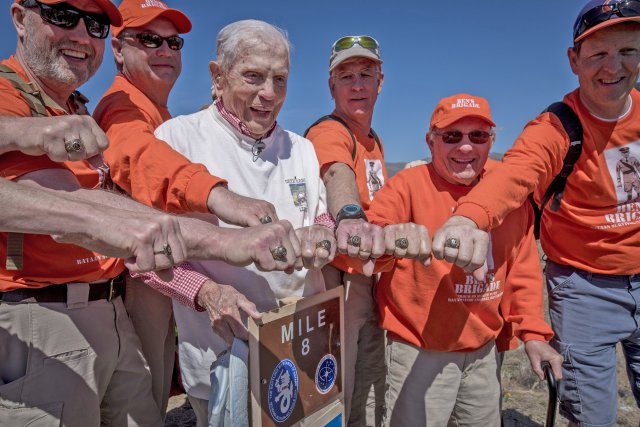
How many more years he’ll be able to do it is anybody’s guess.
“I’m not going for anything except as far as I can,” he said.
Ben Skardon is already training to walk in the next Bataan Memorial Death March.
